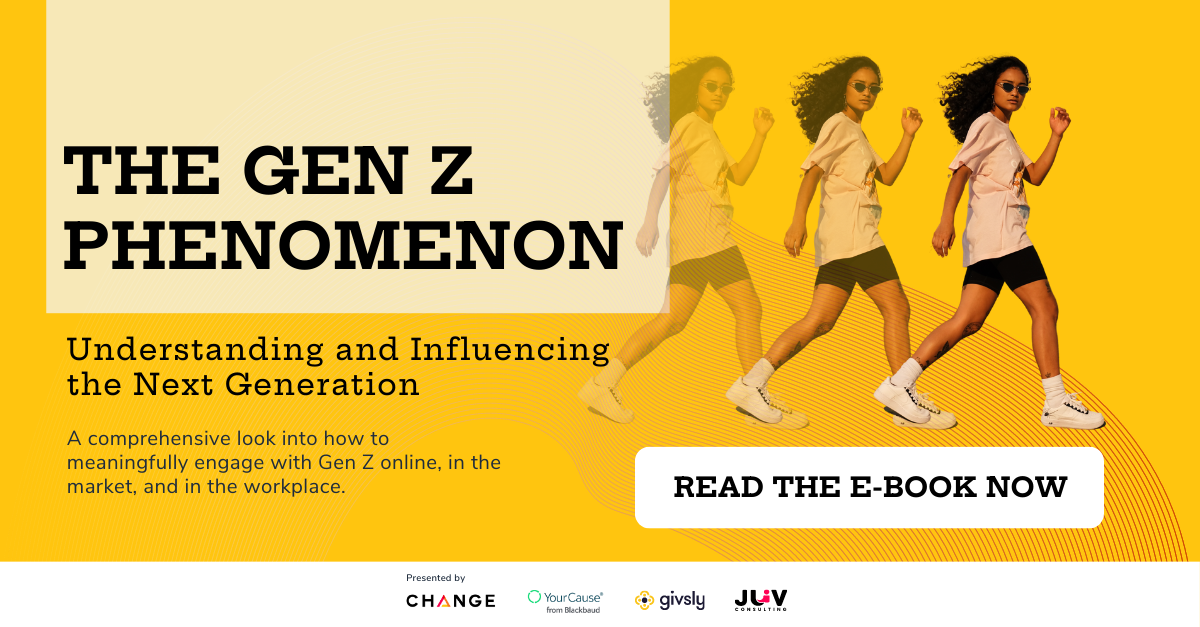Disaster relief, climate change, cancer research, all serious and important causes to advocate for but what do your employees care about and how do you harness the power of collective impact to make a difference? For companies looking to attract and engage talent across generations purpose-driven work is a key to success. And you don’t have to take just our word for it, Great Places to Work shares research1 on how purpose at work predicts if employees will stay or quit,
The more employees participating in your programs, the greater the outcome for everyone. Employees will be involved in making a meaningful impact, nonprofits will have more resources and your company will be driving change that benefits your community. There is a lot of opportunity to get creative with employee giving and volunteering programs and build something tailored to your unique culture, but it can be difficult to get employees to take action.
One way for companies to better understand how to shape their programs is to look at research and trends within CSR and within the broader charitable sector. Afterall in the same way that nonprofits use giving and volunteer data to create strategies for increasing donor engagement across generations, companies can use that information to create strategies that increase employee participation with their giving and volunteering programs. This article will provide some insights from recent reports on giving and volunteering from the charitable sector to help companies tailor opportunities to engage employees by generation.
Generational Giving Data
We provide some key trends that stuck out to us from reports by Giving USA2 and CanadaHelps3 on how different generations support charitable causes.
Giving USA released a special Giving by Generation Report in 2023 examining the shifts in giving among donor generations. The study aimed to provide new information on Millennial and Gen Z donors as an emerging force in philanthropy as well as compare the shifts in engagement since the previous issue in 2016. This 2023 report also provided a few data points on volunteerism, with Millennials and Gen Z reporting the most hours annually, while Gen X and Boomers annual volunteer hours declined since 2016.
- Millennial donors passed Gen X and increased their yearly giving by 40% since 2016.
- Gen Z reported $747 in annual giving, the first data point from Giving USA.
- Boomers continue to give the most, although their annual amount declined 12% since 2016.
Now that you have some data points on what to expect in terms of amount of hours and dollars from each generation, we’d also like to highlight a few key differences in the types of causes supported.
- Gen Z donors surveyed were the only generation that prioritized giving to environmental causes.
- Places of Worship received the most donations across all generations, but there were some shifts in amount. Faith-based organizations received the second highest amount of donations for Millennials and Gen X.
- Millennials are now more engaged in their faith than older generations with 45% reporting they attend church every week or almost every week.
When looking at the CanadaHelps Giving Report there was a noticeable difference in support for charities compared to reliance on their services. This Giving Gap is widening with the decline in participation in giving across generations. Although participation is declining, there is a small group of older Canadians making large donations. Survey data reveals younger generations declining to give due to their financial situations.
- Generation X increased their amount of giving since 2006.
- Millennials and Gen Z decreased their amount of giving since 2006.
- More Millennials and Gen Z reported they could not afford to give.
We believe these trends highlight the importance of doing research and surveying employees to get their input for strategic program initiatives. Another key element to CSR program success that we see across companies in the Global Good Network™ is the ongoing collection of qualitative feedback. Employee focus groups, employee resource groups and/or committees are a great place to collect qualitative feedback from highly engaged employees that provide representation across the workforce in terms of age and tenure within the organization. Consider using these groups to hear first-hand what team members need to know to get involved and what they want to make an impact towards.
If you’re looking to engage Canadian employees with opportunities to make a social impact, consider providing options beyond donating funds, like volunteerism or collecting in-kind gifts for items that a nonprofit may need to operate. You could increase the impact and show your employees appreciation for their time spent volunteering by offering incentives like dollars for doers or matching with volunteer grants. We compiled a list of ideas for volunteer incentives that go beyond paid time off and examples of how companies implemented them in this blog.
Download the guide produced in partnership with Change by clicking the link below to read the rest of this article for a look at what drives people to volunteer and timing for success when launching an employee giving or volunteering campaign.
References:
- Purpose at Work Predicts if Employees will Stay or Quit – Great Places to Work
- Giving by Generation – Giving USA Special Report 2023 – https://store.givingusa.org/collections/special-reports-spotlights
- 2023 Giving Report – CanadaHelps – https://www.canadahelps.org/en/the-giving-report/

